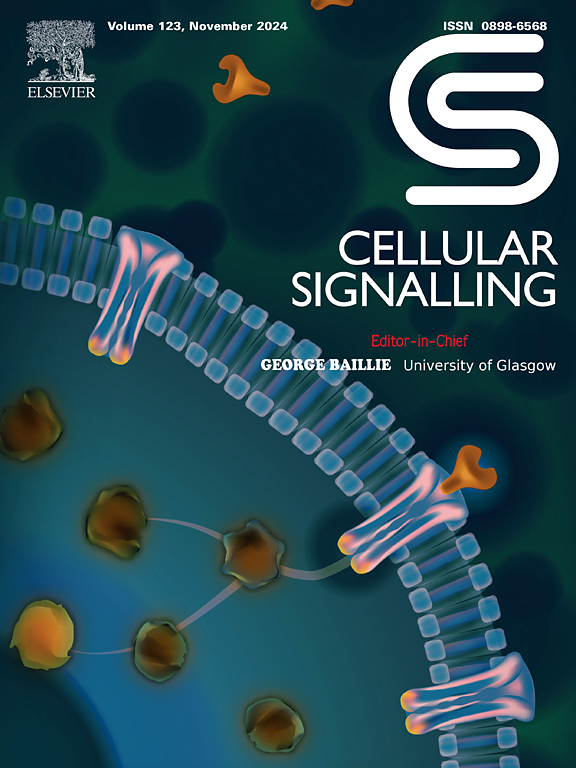GALNT6 dual regulates innate immunity STING signaling and PD-L1 expression to promote immune evasion in pancreatic ductal adenocarcinoma
IF 4.4
2区 生物学
Q2 CELL BIOLOGY
引用次数: 0
Abstract
Despite significant advancements in immunotherapy for cancer treatment, its effectiveness in pancreatic ductal adenocarcinoma (PDAC) remains disappointing, which is greatly due to the unique immunosuppressive microenvironment of PDAC. Here, we focus on the involvement of GALNT6 in immune evasion mechanisms in PDAC. Our results reveal a negative relationship between GALNT6 expression and immune cell infiltration in PDAC. Knockdown of GALNT6 enhances PDAC cells sensitivity to cytotoxic T cells and macrophages. Mechanistically, GALNT6-mediated glycosylation blocks the translocation of STING (stimulator of interferon genes) and accelerates its degradation in a cGAS-independent manner, leading to reduced levels of type I interferon (IFN-β) and CCL5 and CXCL10, thus promoting PDAC immune evasion by inhibiting cytotoxic CD8+ T cell and macrophage infiltration. Furthermore, GALNT6 stabilizes PD-L1 by blocking its ubiquitin-proteasome degradation, thereby promoting tumor immune evasion. Notably, the combination of an O-glycosylation inhibitor with PD-1/PD-L1 inhibitors synergistically enhances the anti-cancer immune response. In summary, these findings highlight GALNT6 as a critical player in immune evasion, and targeting GALNT6 could serve as a valuable approach to boost anti-tumor immunity in PDAC patients.
GALNT6双调控先天免疫STING信号和PD-L1表达,促进胰腺导管腺癌的免疫逃避
尽管免疫疗法在癌症治疗方面取得了重大进展,但其在胰腺导管腺癌(pancreatic ductal adenocarcinoma, PDAC)中的疗效仍然令人失望,这在很大程度上是由于PDAC独特的免疫抑制微环境。在这里,我们关注GALNT6参与PDAC的免疫逃避机制。我们的研究结果显示GALNT6的表达与PDAC的免疫细胞浸润呈负相关。敲低GALNT6可增强PDAC细胞对细胞毒性T细胞和巨噬细胞的敏感性。在机制上,galnt6介导的糖基化阻断了STING(干扰素基因刺激因子)的易位,并以不依赖cgas的方式加速其降解,导致I型干扰素(IFN-β)和CCL5和CXCL10水平降低,从而通过抑制细胞毒性CD8+ T细胞和巨噬细胞浸润促进PDAC免疫逃逸。此外,GALNT6通过阻断PD-L1的泛素蛋白酶体降解来稳定PD-L1,从而促进肿瘤免疫逃避。值得注意的是,o -糖基化抑制剂与PD-1/PD-L1抑制剂联合使用可协同增强抗癌免疫反应。总之,这些发现强调GALNT6在免疫逃避中起关键作用,靶向GALNT6可以作为一种有价值的方法来增强PDAC患者的抗肿瘤免疫。
本文章由计算机程序翻译,如有差异,请以英文原文为准。
求助全文
约1分钟内获得全文
求助全文
来源期刊

Cellular signalling
生物-细胞生物学
CiteScore
8.40
自引率
0.00%
发文量
250
审稿时长
27 days
期刊介绍:
Cellular Signalling publishes original research describing fundamental and clinical findings on the mechanisms, actions and structural components of cellular signalling systems in vitro and in vivo.
Cellular Signalling aims at full length research papers defining signalling systems ranging from microorganisms to cells, tissues and higher organisms.
 求助内容:
求助内容: 应助结果提醒方式:
应助结果提醒方式:


